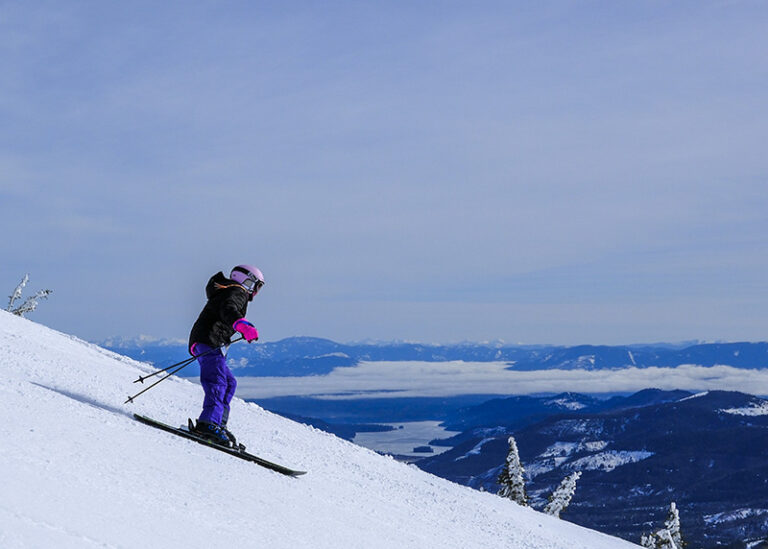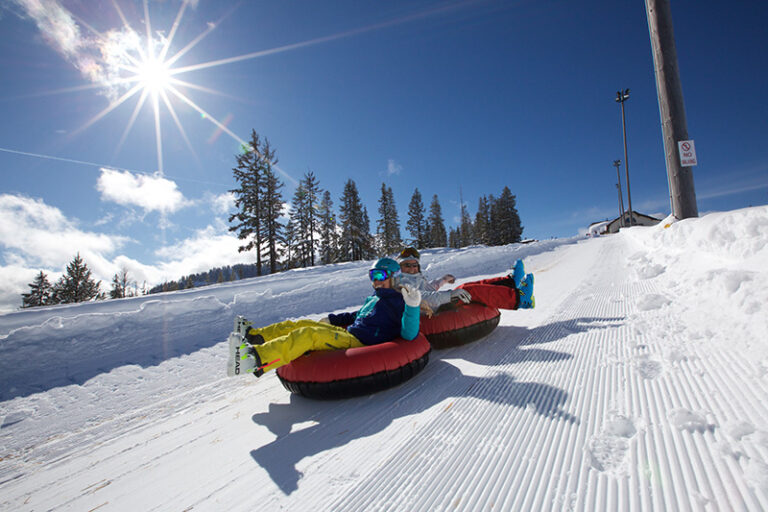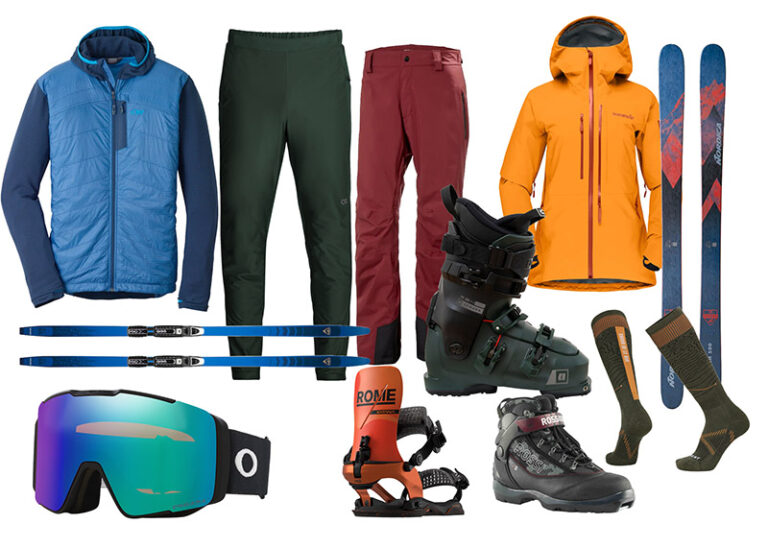How And Where To Geek Out On Our Night-Time Skies
An evening spent stargazing can be the perfect activity during the mild late spring months. Local opportunities range from a short night hike before returning home to spending a night under the stars within developed campgrounds, to backpacking to a remote mountain location. I love to watch for special nocturnal events like lunar eclipses, meteor showers, and high aurora forecasts, although any chance of a clear night sky and an opportunity to view the Milky Way can be enough to send me out the door. Here are some tips on what to bring and where to catch some starry nights.
WHAT TO BRING STARGAZING
I like to pack a headlamp with a red light option to help protect my night vision when I go, and I usually bring either a picnic blanket or a hammock for kicking back to watch the stars with an unobstructed view. It can be helpful to plan enough in advance to treat a picnic blanket with permethrin to help prevent ticks, as some of the best regional stargazing opportunities are to locations where they may be present. Aside from those items, I change my gear for each outing to match the amount of time I will spend outside. Some of my trips are limited to an evening stroll under a dark sky just after dusk, where I might not need much more than a water bottle, a snack, and a jacket, while others require camping or backpacking equipment and perhaps more than a day of advance planning. If I am spending the entire night outdoors, I usually set an alarm to ensure I’m nudged awake at the darkest time of the night or just-in-time to view the peak of a meteor shower.
WHERE TO GO IN MAY AND JUNE
It’s important to consider where the snowline is currently, as some trips are appropriate year-round, and others may have limited access until closer to summer solstice. Here are a few of my favorite places to go to catch the stars.
Fishtrap Recreation Area: Located just west of Spokane and accessed off I-90, this Bureau of Land Management (BLM) property is my go-to spot for last minute plans, like when the predicted aurora activity is high, but I have a 9 a.m. meeting to get back to the next morning. If I don’t want to stay out late, I start a sunset hike on the trail system and exit under the stars. If I can spend the night, the entire area is open to either dispersed camping or backpacking. I have spent several weeknights at Fishtrap over the years, stargazing all night before making a cup of coffee in the parking lot and hurrying home for a morning meeting. My access point is the Folsom Farm site, since there is an outhouse in the parking lot and picnic tables near the old farm barns. There is also lots of bird activity at Smick Meadows at dawn and dusk.
Farmer’s Landing on the South Loop Trail is a great backpacking option for this large recreation area of over 9,000 acres. The Hog Canyon Loop is located within this property, with a lovely overlook near the waterfall (note that the waterfall itself is on private property). The major selling point—proximity to Spokane—is also the one detractor, since this one can have a little light pollution from city lights and is on the flight path of most approaching planes heading into the Spokane International Airport. Know that it will not be the darkest of dark skies, but for anyone looking for a short, easy, and free option close to Spokane, this is fantastic.
Riverside State Park, Mount Spokane State Park, and Liberty Lake Regional Park: While night hiking isn’t possible at the State Parks, which close at dusk, and is very limited at Liberty Lake, which closes at 10 p.m., each of these have fee-based campgrounds that can offer prime night sky viewing with excellent proximity to Spokane. Riverside’s Bowl and Pitcher campground is open year-round, giving this park the widest range of opportunities, although it has the most light pollution as well.
Liberty Lake Regional Park’s campground opens June 1. When camping at Liberty Lake, I like to walk from the campground to the outdoor amphitheater and use the wooden benches as a perfect platform for viewing the night sky. A comfy sleeping pad or yoga mat can provide a little cushion.
Mount Spokane’s Bald Knob Campground (or Quartz Mountain Lookout for those lucky enough to manage to book it) has both the best view of the night sky and also the surrounding lowlands with its location at over 5,000’ elevation. Mount Spokane’s campground opening date varies each year, however, based on when the snow melts from the summit road; it’s early- to mid-June most years.
Telford and Swanson Lake Wildlife Area: These are actually two different properties, with Telford managed by BLM and Swanson Lakes managed by the Washington Department of Fish and Wildlife (WDFW). Note that a Discover Pass is required for accessing any of the WDFW parking lots, but BLM requires no parking permit. Most of the public land here is located just south of Highway 2 east of Creston, where the two properties connect and provide nearly 33,000 acres of fantastic exploration options with numerous wetlands and several small lakes accessed via several different trailhead options. There are very few trees on either parcel, so leave your hammock behind and prepare for the possibility of ticks. These two properties are not near any major population centers, so there is very little light pollution. On a clear night, this can be some of the best lowland stargazing in Washington.
Douglas Creek Canyon: Located farther west and south of Highway 2, Douglas Creek Canyon is another BLM property open to both camping and backpacking. It is just southeast of the Waterville Plateau and has nearly 15,000 acres of public property with multiple trailheads. An old railroad grade runs through a portion of the canyon, or visitors can explore off-trail to find areas to spend the night under the stars. Much of the area was originally used for dryland farming and sheepherding, and the ruins of old homesteads still exist on portions of the landscape. There are a few trees for hammock options, although these are mostly located in the draws and along streams. It’s easier to bring a picnic blanket to spread on an open area of ground, although this is another location where ticks can be found.
The Kettle Crest: The spine of the Columbia Highlands is one of my favorite locations to visit in all seasons, and for several reasons. In addition to prime stargazing, the Kettle Crest also has some of the best local lupine displays shortly after the snow melts. But note that sometimes the snow lingers into June. Prepared backpackers planning trips to the right trailheads can take advantage of year-round stargazing, such as Sherman Pass in the middle (accessing Sherman Peak and Columbia Mountain, or Snow Peak Cabin, which is rentable) and Deer Creek/Boulder at the north end (accessing Profanity Peak). Both main trailheads are accessible in the early season, even if the snow sometimes lingers through May.

Wait until June and car camping possibilities begin to open up at the free campgrounds along Albian Hill Road on the east side of the Kettle Crest. Jungle Hill, Wapaloosie, Old Stage, and Stickpin all offer free car camping options (limited facilities). There is also a fee-based campground at Sherman Overlook. All these campgrounds have nearby hiking trails that connect to the main Kettle Crest National Recreation Trail, a portion of the Pacific Northwest Trail, so this is a great area to plan a longer visit and do some exploring.
Salmo Priest Wilderness and Sullivan Lake: This far northeast corner of Washington is a great area for choosing your preferred comfort level, although those who are willing to get by with the least comfort (backpackers) may also need to wait for the snow to melt for the best access. Sullivan Lake has fee-based campgrounds at both the north and south ends of the lake, which will open for the season beginning May 17, and where the picnic table can double as the prime stargazing location. There are also numerous free dispersed campsites in the area with limited amenities, most of which are nicely treed for relaxing in a hammock while still providing a nice view of the night sky. Moon Flats, just north of Sullivan Lake, has the most apt name for stargazing, but the dispersed sites also extend up Sullivan Creek Road where the creek provides a lovely soundtrack to nocturnal viewing.
As the snow begins to recede, more strenuous options become available. A night trek up Noisy Creek to Hall Mountain is among the earliest options, since the road to the trailhead is usually snow-free even if the summit is not. For June, one of my favorite spots is to hike a portion of the Salmo Loop counterclockwise to Little Snowy Top. There is one perfectly-placed tree at the top for attaching a hammock connected to the remaining pilings from the former fire lookout. Enjoy unobstructed views in all directions and especially overhead.
Wenaha-Tucannon Wilderness and the Blue Mountains: The far southeast corner of Washington also has spectacular dark skies. The Tucannon River drainage is accessible in May and has several free (with Discover Pass), first-come/first-served campgrounds located on Washington Department of Fish and Wildlife property just outside the National Forest boundary. I once spent a fantastic night under the stars at one of the campgrounds following a meeting in Walla Walla, then finishing my drive home early the next morning. But hikers and backpackers also have many options here, especially in June as the snow melts from the high country. The views, day or night, from Oregon Butte and the Mount Misery Trail cannot be beat. This is the best place to try glamping paired with stargazing, with several historic Forest Service guard stations available to rent in the area.
Holly Weiler is the Eastern Washington Regional Coordinator for Washington Trails Association and is fortunate enough that sleeping under the stars in the wilds of eastern Washington is part of her job.













